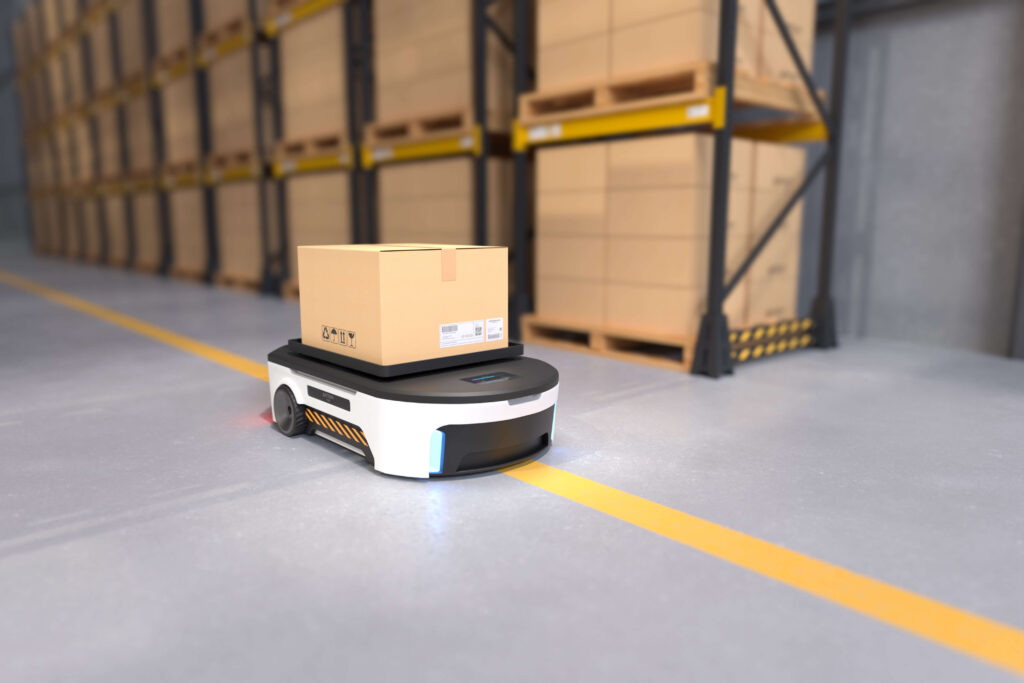Industry 4.0: the digital supply chain
Industry 4.0, also called the fourth industrial revolution, is happening right now. It’s the name given to the rapid trend towards technology that is driving interconnectivity, automation, machine learning and real-time data.
Industry 4.0 technology is the driving force behind digitisation in supply chain management. Since the coronavirus pandemic, businesses have increased their focus on moving towards digital supply chains to improve resilience, responsiveness and efficiency.
In this post, we look at what a digital supply chain looks like and how you can plan for supply chain digitisation.
What is a digital supply chain?
A digital supply chain uses advanced technologies and data insights to allow people to make better decisions at each stage of their supply chain.
What is supply chain digitisation?
Supply chain digitisation is the process of making existing data and processes digital. It should not be confused with supply chain digitalisation or digital transformation, which describe how businesses use this data to make step changes and improvements across their supply chain.

Why are digital supply chains a necessity?
There are a number of factors that are making digital supply chains a necessity:
Supply chain complexity
Very rarely are supply chains simple. Often they span across more than one country and manufacturers, suppliers, distributors and customers are often part of a long, complex, multi-national network. This makes overseeing the entire supply chain a complex task which can be eased with smart technology and data insights.
The need for supply chain resilience
Since the coronavirus pandemic began in 2020, supply chain management teams have been in the spotlight. Disruption across supply chains has been unprecedented, from factory shutdowns, to shipping container price hikes and HGV driver shortages. More and more businesses are looking for ways to deal with these challenges and build resilience into their supply chains of the future. Digitising is one way to do this, as it will allow business to be more agile and responsive to market changes.
The rise of e-commerce
In 2021 online sales on B2B e-commerce websites, log-in portals and marketplaces increased by 17.8% to $1.63 trillion. Yet again, the coronavirus pandemic accelerated this growth as businesses moved online to keep their routes to market open. See this guide on eCommerce supply chain management for more information.
Growing customer expectations
Consumers will go where they can find the best prices and the best service experience – they want goods as cheap as possible and delivered as quickly as possible, with minimum hassle. The need for quick and accurate order fulfilment has driven the move towards digital supply chains.
Efficiency and profitability
If implemented correctly, digital supply chains should improve the efficiency and profitability of a business. Automation, predictive analytics and real-time data will all help businesses plan smarter and execute more productively.
What does a digital supply chain look like?
A digital supply chain can include a vast array of technologies that make processes more efficient and data more manageable.
Software systems can include warehouse management systems, demand forecasting tools, inventory optimisation software, transportation, logistics and purchasing platforms.

Warehouse automation such as conveyor systems, picking devices, automated guided vehicles, drones and robots are used to increase productivity and reduce operational costs.
At the heart of all these technologies is data – each one needs a data input to perform and then provides outputs that give feedback and help with analytics.
A truly digitised supply chain will utilise the Industrial Internet of Things. This is when all devices, software and machines are connected using sensors and unique identifiers, such as Radio Frequency ID, allowing them to send and receive digital data. This data is then sent to a central system – so there’s one place to manage all aspects.
With such sophisticated systems, you can track inventory items throughout the whole supply chain in real-time.
Advanced digital supply chains go on to use predictive analytics. Technologies such as artificial intelligence (AI), machine learning and digital twins can analyse and interpret the most complex data to automate workflows and processes across the supply chain. They can also identify patterns and influential factors to enable the early detection of supply chain issues, helping reduce risk and avoid potential losses.
How to implement a supply chain digitisation plan
Assess the current situation
Every business is at a different stage in its supply chain digitisation journey. The first step, therefore, is to review and understand your supply chain’s current business and technical capabilities.
Mckinsey recommends looking at the following:
- Data. What data do you generate and collect across your supply chain, and is it easily accessible and useable?
- Analytics. Do you have the analytical capabilities to extract useful insights from your data?
- Software and hardware. Are your software and hardware systems fit for purpose?
- Talent. Do you have a workforce with the right skills to transform your supply chain?
- Processes. Which processes currently work well across your supply chain, and which ones could be improved as part of the digitisation project?
Set out your vision and goals
With a good understanding of your current supply chain operations, the next step is to set out your future vision.
Your supply chain vision should be aligned with your business’ strategic goals. It should also account for current supply chain challenges and opportunities. This could include issues such as logistics disruption, rising raw material costs, or omni-channel sales. The goals should be clear and measurable.
Set priorities

Review the scope of your digital supply chain programme and set priorities. Carry out a cost/benefit analysis on each project and also evaluate their ease of implementation. There may be some ‘quick wins’ that will be cheap and quick to execute and will deliver significant improvements, versus those that will cost more and have less impact.
Upskill your workforce
Review the skills of your workforce and identify capability gaps. These could be around technology or process implementation. Decide if you can upskill or need to recruit, so you have the expertise you need to manage your digital supply chain.
Monitor progress
Monitor the progress of your supply chain digitisation plan. As soon as you have the technology to do so, set and review key performance indicators so you can continuously evaluate your progress against your vision.
Don’t overlook change management
Whilst digitisation projects require experts to drive the programme of change, success will only come if the entire workforce is taken along for the ride. Moving to a digital supply chain will need you to nurture a culture that encourages experimentation, innovation, and continual improvement.
If you’d like to know more about how EazyStock demand forecasting and inventory optimisation software can support your supply chain digitisation journey, please get in touch.








